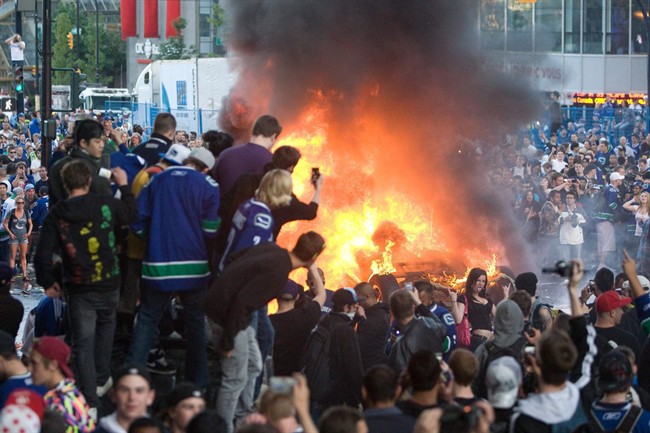Lots of people had them, but few understood how large of a role smartphones would play in the Stanley Cup Riot of 2011.

On the day of the riot on June 15, I was assigned to report on activities in Surrey.
There was a public viewing area set up at Central City in Whalley, but by mid-afternoon there was a long lineup at the nearby SkyTrain station. Hundreds of people were heading downtown.
I talked to a man with his young son who said, “We are going down to watch the riot.”
As the evening progressed and the game became increasingly sour for the Canucks, the crowd angered.
Surrey was quiet, but Vancouver was burning.
Cameraman Karl Casselman and I were reassigned to head downtown.
Coming over the Granville Bridge, we could see smoke from multiple fires. As we drove into the core, we passed vehicles with windows smashed.
We parked, grabbed the camera, looked at each other and headed toward Granville Street.
Within minutes we saw a crowd gathered around an overturned car and a man attempting to stuff a newspaper into its gas tank and light it on fire.
Many in the crowd were shooting with their smartphones, but as soon as Karl walked up with his news camera, he was attacked.
- 2 teens charged with murder in case of 16-year-old killed outside Halifax mall
- Green Party deputy leader given jail sentence for Fairy Creek old growth protests
- Cars torched, explosions heard in suspected arson in Montreal neighbourhood
- Gas station clerk stabbed several times during violent attack at Ultramar in Montreal
He ended up with a fat lip and I was shoved to the ground.
At the same time, people seemed oblivious to the many people capturing the scene on their smartphones.
With the assistance of some people in the crowd, we managed to escape but the camera’s viewfinder had been ripped off, so our shooting was over.
That did not stop hundreds of people from taking thousands of still pictures and videos of the riot and posting them on social media sites.
I walked through the riot zone watching young, well-dressed people walking out of stores with stolen property or causing property damage.
Later, during the police investigation, many of the suspects were identified using pictures and video people had shot on their smartphones.
It was one of the first major events when such a large quantity of publicly generated material was used to prosecute suspects, many of whom had never been in trouble with the law.
Five years later, many people are more aware of the power of the smartphones they carry in their pockets.




Comments